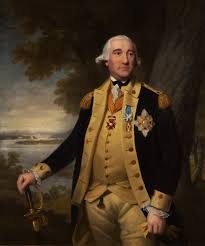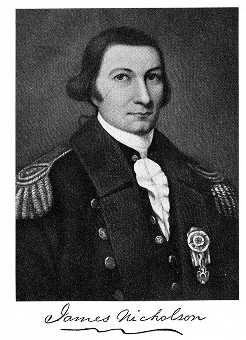The First Century
On February 3, 1784, a committee consisting of Colonel Philip Van Cortlandt; Lieutenant-Colonels Edward Antill, William S. Smith, Benjamin Walker; Majors Nicholas Fish and Richard Platt; Captain Edward Dunscomb; Lieutenant James Fairlie; and Dr. John Cochran, were appointed to prepare for the Society a set of by-laws, which were submitted and adopted on the 9th of February following.
On the January 21, 1786, at a meeting held at the New York Coffee House, Baron Steuben, Col. Samuel B. Webb, and David Brooks, Assistant Clothier-General, were appointed to draw up a plan of the proper ceremonials to be observed in the delivery of diplomas to the members of the Society. The plan was presented and adopted on the 21st of June following.
On the July 4, 1788, Commodore James Nicholson was invited to attend the Society meeting as a member. In the minutes of that meeting it was expressed that naval officers of similar rank were entitled to be members of the New York Society.
At a meeting on February 1, 1790, it was determined to celebrate in the future the anniversary of the birth of George Washington.
On January 23, 1792, at a meeting of the Society at Corre's Hotel, it was resolved that the Standing Committee be directed to hold a meeting on the first Monday in every month, for transacting such business as may appear to them proper, and that it be the duty of the secretary to give notice thereof to the members.
At a meeting in January 1801, a committee consisting of Maj. James Fairlie and Lt. John Stagg, Jr., Secretary, were appointed to present a design for a suitable standard for the Society. At a later meeting the following report was approved as follows: That a banner be adopted instead of a standard, of the form hereunto annexed, to be made of silk, and to measure about forty-one inches in length, and twenty-eight inches in breadth. That the stars be silver embroidered on a blue field. Thirteen stripes, light blue and white alternately. Fringe, silver, about two inches in length. On the top of the staff - which is to be painted white, and to be about ten feet in length - to be represented an eagle - the order the Society - to be made of brass, or copper, and gilt - from its beak a gilt chain, suspending the banner.
On July 13, 1804, a special meeting of the Society was called to announce the death of New York Society member and current President-General Alexander Hamilton. A committee of the Common Council of the City of New York requested the New York Society to organize the funeral procession and to appoint a committee for that purpose. The Society subsequently erected a tablet in honor of Hamilton in Trinity Church, New York City.
On July 4, 1806, the Society adopted a form of certificate of membership that was to be endorsed on the back of the original member diploma in cases where a hereditary member was admitted to represent the original member.
On April 8, 1829, Maj. William B. Crosby, Secretary, was appointed to acquire a new eagle for the Standard of the Society. The Society acquired an elegantly gilded copper eagle made by Nel West, a mechanic of New York City. A new and lighter chain to suspend the banner of the Society to the eagle was also authorized and acquired.
On July 4, 1857, the Society adopted its rules and regulations in regard to the qualifications and admission of members into the New York Society known as the Rule of 1854, which was recommended by the General Society on May 17, 1854 at its Anniversary Meeting Triennial in Baltimore. Our membership diploma was also introduced and adopted at this meeting.
On December 14, 1883, at a meeting of the Society's Standing Committee, a history of the Society was commissioned to be written by John Schuyler, Secretary of the Society. The book was completed and published in 1886, with a second printing issued by the New York Society in 1998.


